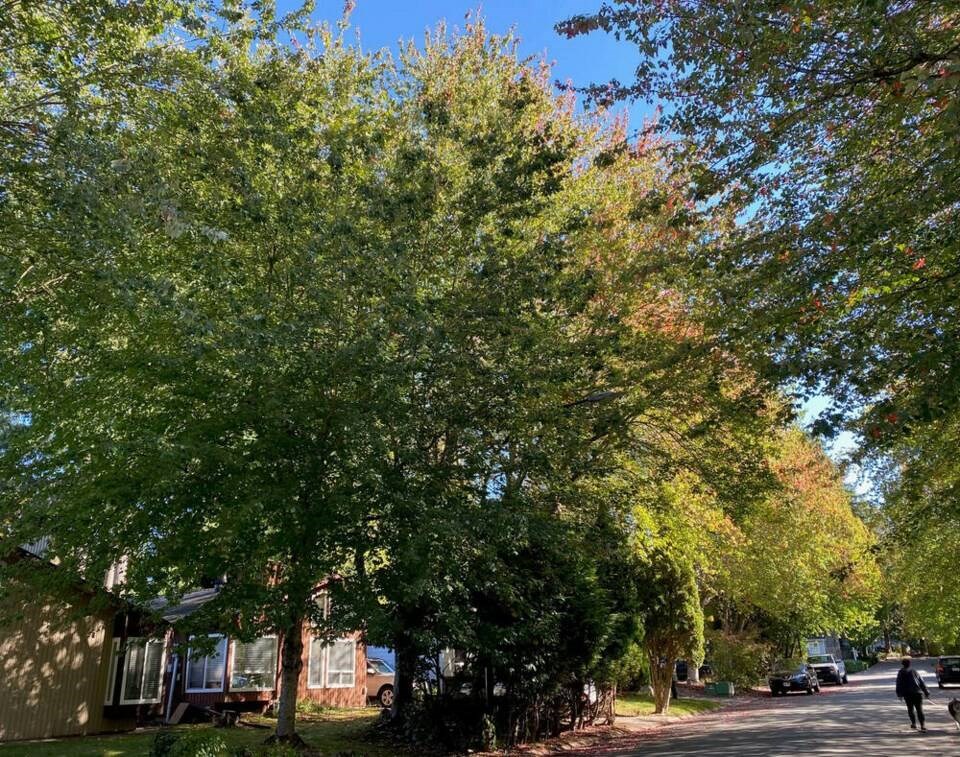If B.C. is truly committed to protecting its residents from the next climate disaster, we must prioritize shade, green space and urban cooling alongside density.

A commentary by two members of the Canadian Association of Physicians for the Environment and an organizer with Sierra Club B.C.
Four years ago, British Columbia endured the deadliest weather event in recorded Canadian history.
The 2021 heat dome claimed the lives of more than 600 people, many of whom died alone in overheated homes.
As we mark the fourth anniversary of this devastating mass casualty event with record-breaking heat elsewhere in the country, we must confront a troubling truth: B.C. remains dangerously unprepared for the next one.
Despite some advancements, including updated building codes, rebates for heat pumps and a now-depleted $30-million fund to provide vulnerable households with air conditioning units, one of the most critical aspects of climate readiness has seen little to no progress. In fact, it’s getting worse.
Our communities are rapidly losing tree canopy, green space and permeable surfaces — the very elements that keep cities cooler during extreme heat.
The result is a growing urban heat-island effect that leaves already susceptible residents at increasing risk.
We all know what it’s like to walk down a tree-shaded street on a hot day and what it’s like when trees are replaced by concrete. During extreme heat, shaded areas can be up to 20°C cooler than exposed pavement.
While heat domes were previously rare, they are now projected to become more common, with some models predicting they could occur three out of every 10 years by mid-century if greenhouse gas emissions aren’t reduced.
The 2022 Extreme Heat Death Review Panel was unequivocal: “A number of deaths occurred in neighbourhoods with large roads, large buildings, high density and low greenness.”
It also warned that “declining tree canopy and permeable surfaces in urban areas will increase vulnerability to extreme heat.”
Lack of proximity to greenspace was further identified as an independent risk factor for mortality, alongside being elderly, isolated and low-income.
The same report urged immediate action. It directed the province to ensure key legislation updates mandating protection and restoration of urban tree canopy and permeable surfaces as part of B.C.’s Climate Preparedness and Adaptation Strategy.
That directive has not been followed.
This is not a question of choosing between housing and greenspace — we can and must increase both. The province’s push to add urgently needed housing supply is a necessary step to address the housing crisis. Urban infill and density are critical climate solutions, and we fully support that goal.
But B.C.’s housing strategy makes no mention of trees, greenspace or urban cooling. Without these safety measures, we risk designing neighbourhoods that are less resilient to extreme heat.
Recognizing this, the Union of B.C. Municipalities passed a 2024 resolution urging the province to incorporate tree canopy and climate goals into its housing strategy.
In many B.C. communities, neighbourhoods with the least tree cover are also those with the highest levels of poverty, isolated seniors and people with disabilities and chronic illnesses. These residents are most at risk during extreme heat events.
Ensuring equitable access to shade, green space and cooling through targeted tree planting and preservation efforts isn’t just about beautifying neighbourhoods — it’s a public health imperative.
No one should be more likely to die during a heatwave because of the postal code they live in.
We’ve already seen the consequences. During the 2021 heat dome, emergency departments and paramedics were pushed past their limits. First responders saw a 50 per cent increase in call volume, reaching an all-time high. Hospital visits spiked for heat stroke, dehydration, heart failure, kidney failure and other critical conditions.
Trees are not luxuries, they are life-saving infrastructure. Trees cool cities, reduce heat-related illness, improve mental health and save lives. Protecting and expanding the urban canopy is one of the most effective, equitable and affordable public health interventions available.
Climate safety and housing need not be at odds. In fact, they must go hand in hand. We need to build housing and green infrastructure together, creating communities that are affordable, climate-resilient and safe for all.
Premier David Eby and his ministers can start to fix this by:
1. Implementing the coroner’s directive to embed tree protection and restoration in key legislation.
2. Establishing a plan to restore and expand urban greenspace, particularly in equity-deserving neighbourhoods where tree canopy is sparse.
3. Incorporating tree canopy and climate goals as a core part of B.C.’s housing strategy.
Every year that passes without decisive action puts more lives at risk. If B.C. is truly committed to protecting its residents from the next climate disaster, we must prioritize shade, green space and urban cooling alongside density. This is not a trade-off — it’s how we build a climate-ready future. Our health and our lives depend on it.